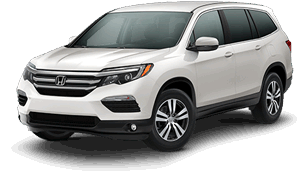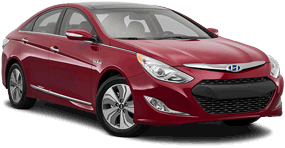Believe it or not, depreciation is the single highest cost of owning a car, according to Trusted Choice. In all most all instances, no matter what you do, you’re going to lose money on a car you buy new. It doesn’t matter how much you obsess over your car’s condition, how many times you wax it, or how many times you change the oil. Depreciation occurs the moment you drive that shiny new car off the dealer’s lot.
A smart car shopper will try to combat crippling depreciation by buying a low-mileage car that’s only a few years old. If you buy the car after its initial depreciation, you’re not going to take the big hit. However, sometimes you might not want to buy a three or four-year-old car. If this is the case, consider purchasing a one-year-old vehicle.
Why Buy a One-Year-Old Car?

When you buy a car that’s only a year old, you let the car’s first owner take the biggest depreciation hit. You get a close-to-new car at a fraction of the cost. This means you’ll lose less money on the car overall when you go to sell it years down the road. Also, when you buy the final year of the generation (like the 2017 Chevy Traverse above) before a redesign, more savings can come your way from the dealership.
It may sound crazy, but simply purchasing a car and driving it off the dealer’s lot causes it to depreciate by 11 percent, according to Trusted Choice. Think about that for a second. Say you buy a Honda Accord Hybrid (pictured below) or a Toyota Camry Hybrid for an even $30,000. It loses $3,300 of its value before you even travel your first mile in the car.

After a full year of ownership, the car will have depreciated between 20 and 25 percent depending on the model. USA Today reported Edmunds.com data that noted the average depreciation for a car in its first year is about 22 percent. Let’s use that $30,000 example again. After a full year of ownership, that car that you purchased just twelve short months ago is now only worth $23,400.
After a year, you will have probably put about 12,000 on it. That’s
After Year One, Depreciation Slows

Shockingly, cars like the Cadillac CTS (which drops a whopping 31.8%) actually slow down in depreciation after the first year. But that huge drop at first can save you a ton of coin. Depreciation drops dramatically after the first year of ownership to roughly 12 percent annually according to data from Edmunds. That means that if you buy a car after it’s passed its first birthday, you’re not going to experience as heavy of depreciation moving forward. Barring any accidents or neglect, your automobile shouldn’t depreciate exceedingly fast.
This slowing of depreciation is also why buying a three or four-year-old car might not be the best choice. You often hear that a three-year certified-pre-owned car is
A good resource to use is Edmunds True Cost to Own tool. This tool shows you the estimated five-year cost of buying and owning a vehicle. With this data, you should be able to determine which car will be the very best vehicle to buy. You should also be able to determine if the car you’re interested in is a better deal as a one-year-old car or a three-year-old car. It takes a little homework, but if you do your due diligence now, you’ll be happier in the long run.


